African Fashion History
6 mins read
These 3 West African Fabrics Are Game Changers in Sustainable Fashion
By Moyosoreoluwa Sanmi-alao
August 20, 2025
Aso-Oke, Kente, and Adire have always led the way in eco-fashion. Explore their rich heritage, sustainable production systems, and modern reinventions.
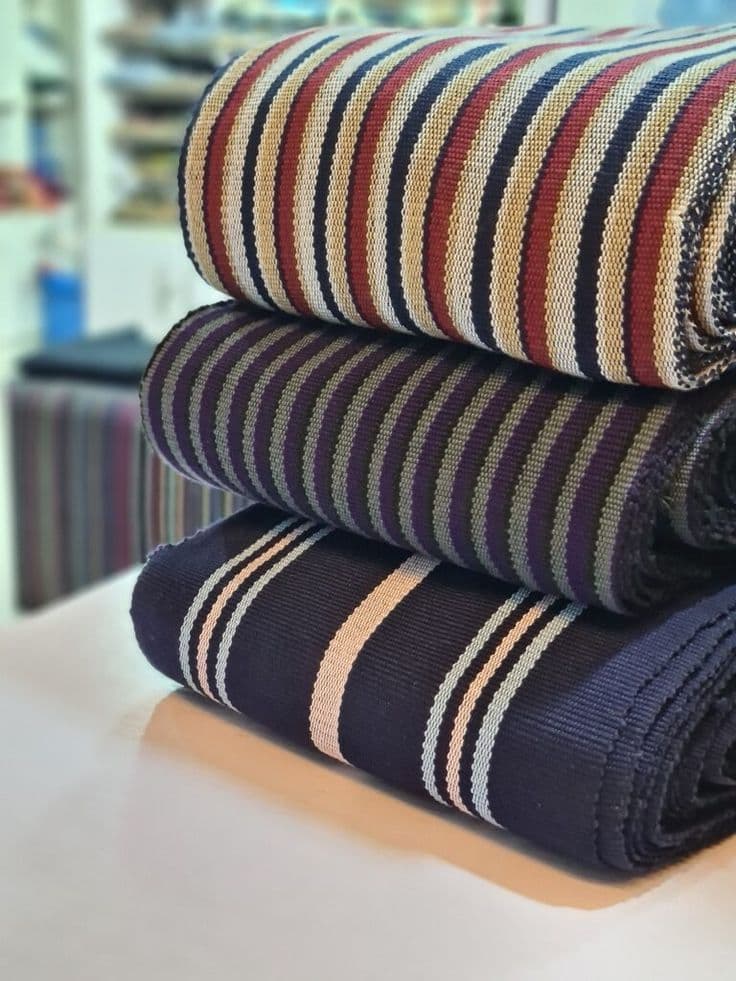
Aso-Oke fabric originates in Nigeria, using production systems rooted in ethical fashion | Pinterest
Long before the term sustainable fashion became relatively mainstream, African artisans were already using techniques that the world would now celebrate as eco-friendly. Growing up Yoruba, I saw this firsthand. My mother’s wardrobe is filled with Aso-Oke geles in different weaves and patterns, each carefully chosen to match an outfit or occasion.
At the time, I only admired their beauty. Now, I recognise them as examples of a fashion system that values durability and mindful craftsmanship.
That connection is what drew me to explore African indigenous fabrics like Aso-Oke, Kente, and Adire more deeply. What makes them so special? How are they created? And how are their age-old techniques being reimagined for today’s slow fashion movement?
Aso-Oke
Aso-Oke (pronounced Ah-soh Oh-keh), meaning “top cloth” in Yoruba, is a handwoven fabric that has been part of Yoruba heritage for centuries. It is also known as Aso-Ofi, originating from southwestern Nigeria, particularly in towns such as Iseyin (Oyo State), Ede (Osun State), and Okene (Kogi State).
Aso-Oke is traditionally woven on narrow looms; each piece is the work of skilled artisans who pass their techniques down through generations. The patterns and colours often hold significance and may signify wealth, status, or family heritage.
There are three types of Aso-Oke, each having its distinct characteristics and colours:
- Sayan: Pale brown and woven from beige wild silk.
- Alaari: It is usually deep red, and woven with either synthetically or locally grown cotton and shiny threads.
- Etu: Known for its dark blue colour, often with thin light blue stripes.
The making of Aso-Oke is as beautiful as the final fabric itself. It begins with cotton, handpicked during the rainy season and carefully cleaned using a wooden block and an iron rod to ensure nothing goes to waste.
The seeds are saved for replanting, while the fibres are spun into fine threads with a spindle known as Orun. These threads are either left in their natural cream shade or dyed into the bold colours Aso-Oke is known for.
Traditionally, two types of looms are used: the upright single-heddle loom, often operated by women, and the horizontal double-heddle loom, commonly handled by men. The difference lies in what they produce; women’s looms create narrower strips, while men’s looms make wider pieces and allow for more complex patterns.
Once the loom is set, the weaver interlaces warp (vertical) and weft (horizontal) threads with a shuttle to make the beautiful patterns.
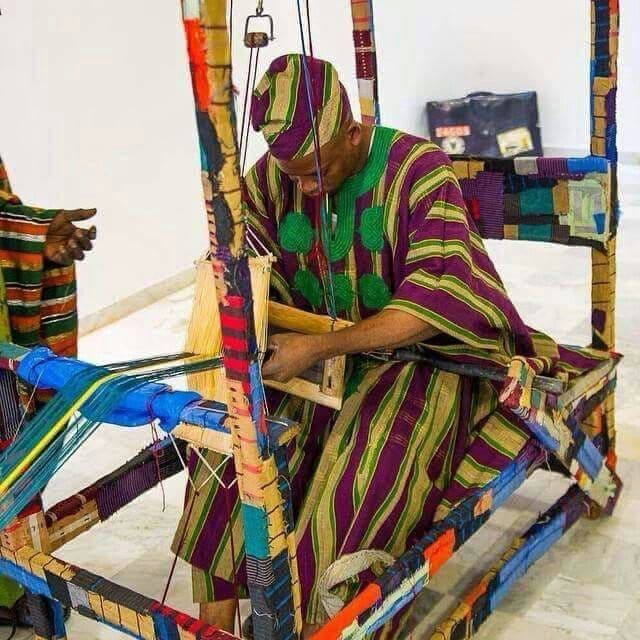
A skilled Aso-Oke weaver working on his loom | Pinterest.
Traditionally, Aso-Oke is worn for important occasions, but today, it has evolved far beyond just weddings and chieftaincy events. Modern designers are blending metallic threads with traditional cotton and silk to create dazzling fabrics, which contemporary brides still favour. Also, Aso-Oke is being reimagined into ready-to-wear outfits, handbags, shoes, and even modern art pieces.
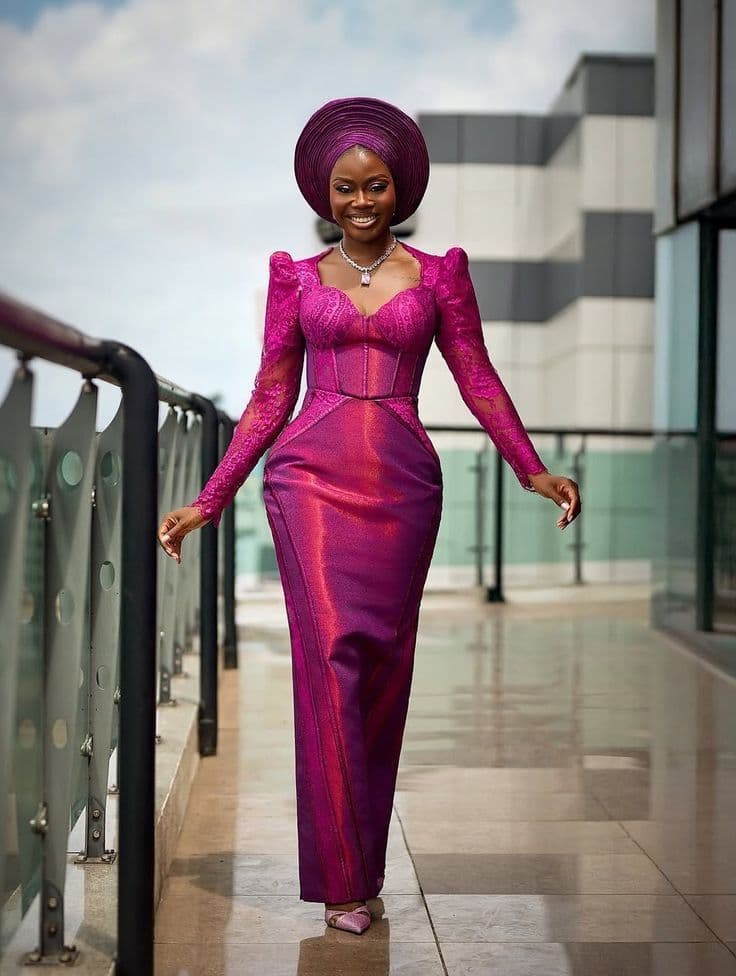
A Nigerian bride in a metallic pink-purple customised Aso-Oke piece | ateni.ng.
Kente
Kente is one of West Africa’s most recognisable textiles. It is a colourful fabric deeply tied to the identity of the Akan people of Ghana, particularly the Ashanti Kingdom, and also woven by Akan communities in the Ivory Coast. The name “Kente” comes from the Akan word “kenten,” meaning basket.
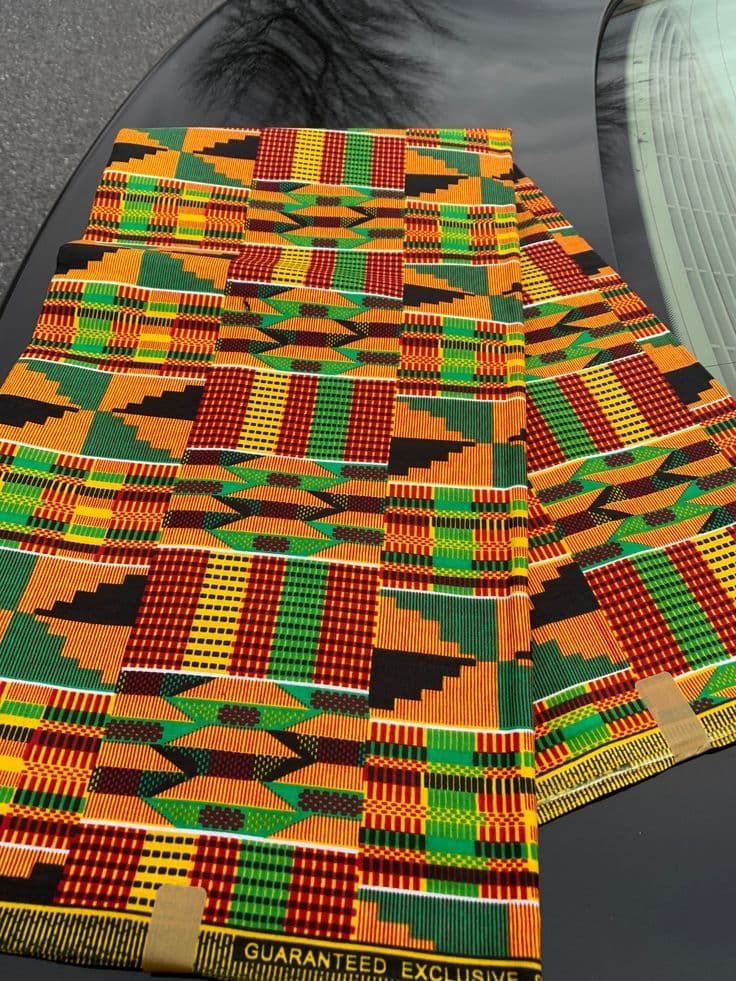
Kente in prints | Pinterest.
Traditionally, Kente is woven by hand on a horizontal wooden loom. Skilled weavers, often trained for years under a master, create the fabric by interlacing brightly dyed threads of silk, cotton, or rayon. The cloth is woven in narrow strips, usually 1.5 to 2 metres long and 8 to 12 centimetres wide. These strips are then sewn together to form larger pieces, which are draped around the waist and shoulders in the style of a toga.
Early Kente was made from white cotton with simple indigo patterns. Its transformation began in the 17th century with the arrival of silk through trans-Saharan and later European trade routes, which introduced new textures and colours. This shift inspired more intricate designs that were once reserved for Akan royalty. Today, Kente is woven in a spectrum of colours, each carrying symbolic meaning:
- Gold for wealth and royalty.
- Green for growth and renewal.
- Blue for peace and harmony.
- Black for spiritual strength.
- Red for political or spiritual sacrifice.
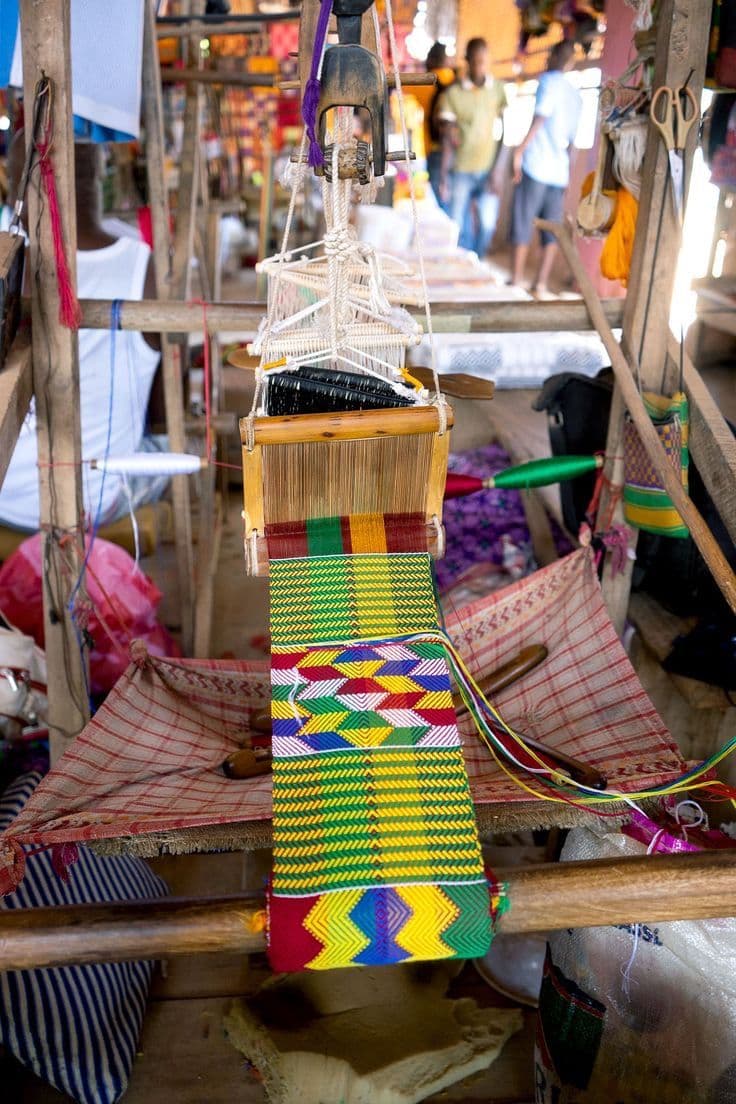
Kente weaving on a loom | Pinterest.
Kente exists in three forms: authentic handwoven cloth produced in weaving towns like Bonwire, Sakora Wonoo, Ntonso, Safo, and Adawomase in Ghana’s Ashanti region; Kente prints made by African textile brands like Vlisco and Akosombo Textile Ltd; and mass-produced versions often manufactured in Asia.
Kente, once reserved for royalty and sacred occasions, has evolved into a modern piece. Its striking colours and patterns now grace graduation stoles, scarves, shawls, and everyday accessories, while modern designers continue to adapt it into contemporary African fashion.
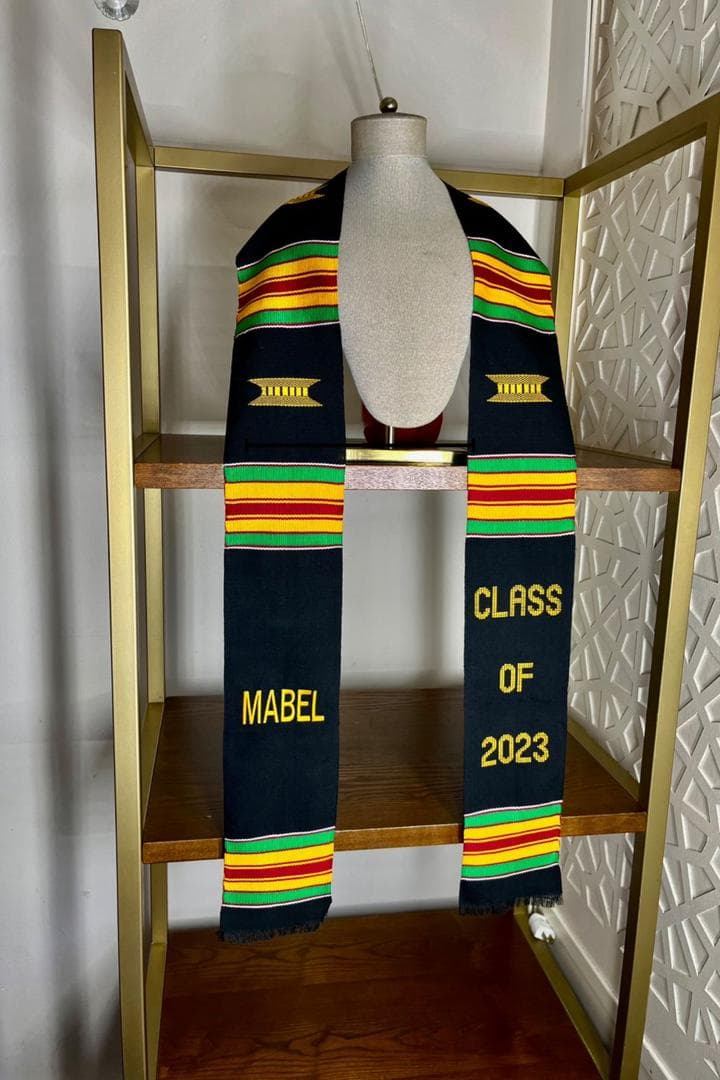
A Kente graduation stole | Pinterest.
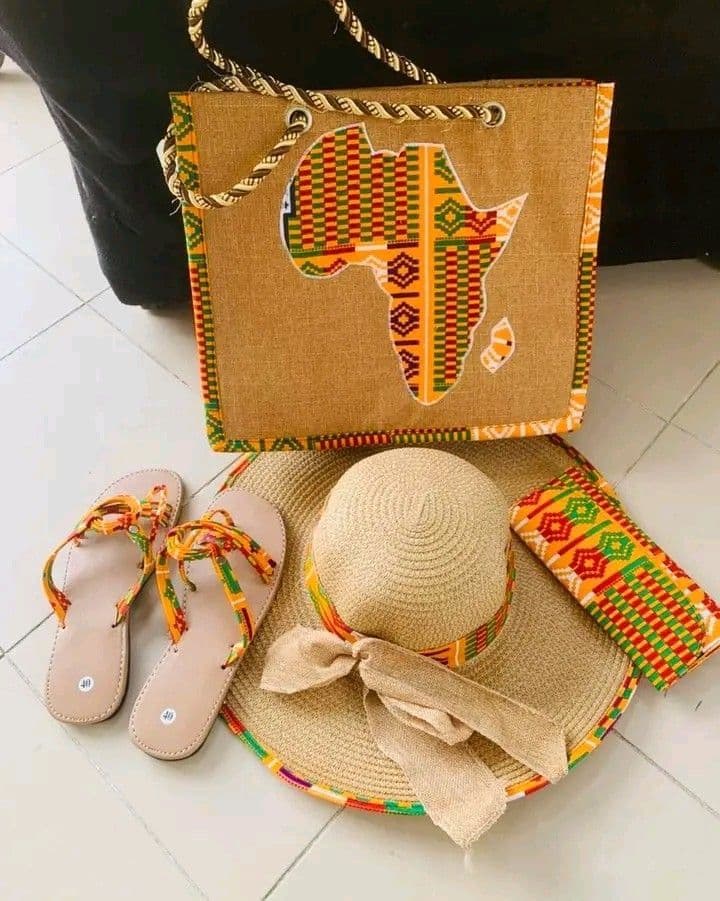
Kente fabric incorporated into modern fashion | Pinterest.
Adire
Adire, meaning “tie and dye” in Yoruba, is a centuries-old textile art that originated among the Egba people of Abeokuta, southwestern Nigeria. Adire is traditionally made from locally woven cotton. The fabric is dyed using intricate resist techniques and colored with natural indigo from the Elu plant (Lonchocarpus cyanescens).
The dyeing process is overseen by specialist dyers known as Aladire, and it involves fermenting the indigo leaves for weeks, sometimes months, before dipping the cloth and drying it under the sun.
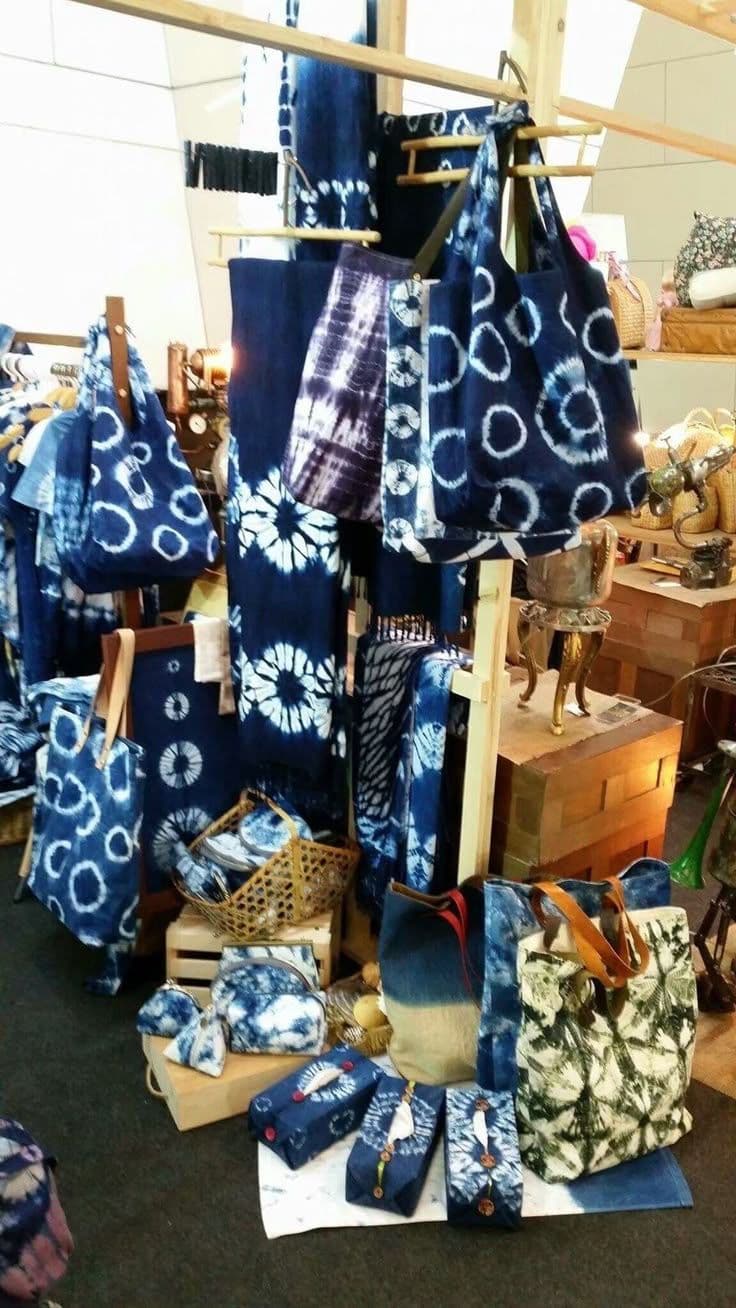
Adire fabric is now used for all sorts of things, including dresses and tote bags | Pinterest.
Adire patterns are created using three main resist-dyeing techniques:
- Oniko: It involves tightly tying sections of the fabric with raffia to produce bold, geometric shapes.
- Alabere: It uses stitching to outline delicate motifs, which appear once the threads are removed.
- Eleko: It is a starch-resist method, where cassava paste is painted freehand to create fluid, intricate designs.
All three techniques rely on biodegradable materials, avoid harsh chemicals, and leave a minimal environmental footprint, naturally aligning with the principles of slow fashion.

Adire fabric-making adapts sustainable processes, minimal environmental impact | Pinterest.
For generations, women in Abeokuta, Osogbo, and beyond have passed down their skills, turning the fabric into both a cultural emblem and a livelihood.
Adire was once reserved for traditional garments like wrappers and Agbada; however, it has evolved into a versatile fabric embraced by contemporary designers. Today, its hand-dyed patterns appear on everything from jackets and skirts to bags and sneakers, proving that a tradition rooted in sustainability can remain stylishly relevant in the modern world.
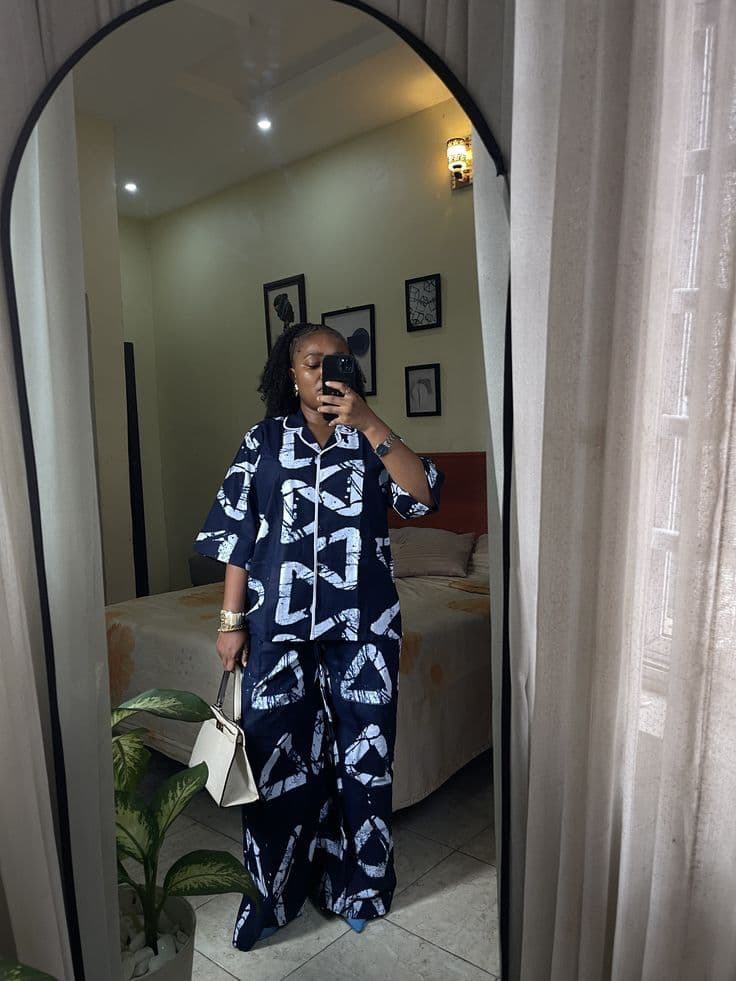
Contemporary-styled Adire outfit | Pinterest.
Like Post
Comments
Anonymous872
8/20/2025I love how we’re reinventing these materials into modern looks
Related Posts
MoreRita Idehai, on Waste, Work, and Driving Social Impact in Nigeria
Through Ecobarter and its fashion arm, Wrep, Rita Idehai is transforming plastic waste into fabric, and creating new pathways for women and communities to thrive.
Miss Green Fashion ‘25: Celebrating Beauty, Sustainability, and Impact
Miss Green Fashion is redefining beauty with purpose, promoting sustainability, creativity, and women’s empowerment.
10 Sustainable Fashion Habits You Can Start Today
We highlight 10 simple everyday habits to make your fashion choices more sustainable, from rewearing and repairing to thrifting and supporting local artisans.
The Hidden Plastics in Our Clothes
Much of our clothing is made from plastic-based fabrics like polyester and nylon. Learn their impact and how to choose more sustainable options.